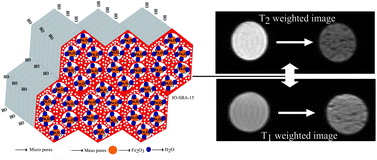Superparamagnetic nanosystems based on iron oxide nanoparticles & mesoporous silica: synthesis & evaluation of their magnetic, relaxometric and biocompatability properties
Abstract
Mesoporous

* Corresponding authors
a Centre for Nanotechnology & Advanced Biomaterials (CeNTAB), School of Chemical & Biotechnology (SCBT), SASTRA University, Thanjavur, India
b Department of Condensed Matter Physics and Materials Science, Tata Institute of Fundamental Research, Colaba, Mumbai, India
c Department of NMR & MRI Facility, All India Institute of Medical Sciences, New Delhi, India
Mesoporous

 Please wait while we load your content...
Something went wrong. Try again?
Please wait while we load your content...
Something went wrong. Try again?
S. Gandhi, S. Venkatesh, U. Sharma, N. R. Jagannathan, S. Sethuraman and U. M. Krishnan, J. Mater. Chem., 2011, 21, 15698 DOI: 10.1039/C1JM12500A
To request permission to reproduce material from this article, please go to the Copyright Clearance Center request page.
If you are an author contributing to an RSC publication, you do not need to request permission provided correct acknowledgement is given.
If you are the author of this article, you do not need to request permission to reproduce figures and diagrams provided correct acknowledgement is given. If you want to reproduce the whole article in a third-party publication (excluding your thesis/dissertation for which permission is not required) please go to the Copyright Clearance Center request page.
Read more about how to correctly acknowledge RSC content.
 Fetching data from CrossRef.
Fetching data from CrossRef.
This may take some time to load.
Loading related content
